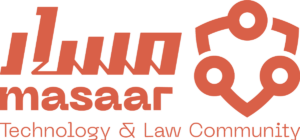Prevention of AI Misuse
The importance of preventing AI misuse
Despite the beneficial uses of AI, AI systems can be misused by state organizations, criminals, or economic rivals for dishonest purposes – whether to spread false information, conduct espionage, or monitor people. Thus, it is important to examine possible vulnerabilities from the start, beginning from design to maintenance.
Adequate safeguards should be put in place to prevent the misuse of AI systems, including the development of guidelines and best practices for their ethical and responsible use. Besides technical protection mechanisms being integrated for this, it is also crucial to take organizational precautions. The data and learning processes in the AI system should be protected.
It is worth noting that misuse in this context may not necessarily imply the hacking of the AI system, but it could be the use of AI for malicious and unintended consequences. For instance, an autonomous car could be misused for attacks or a system that recognizes toxins for safety reasons can be utilized for developing novel and even more toxic substances. In this regard, safeguards should be embedded in AI system development that detect and deter such criminal use.
Furthermore, AI has the potential to be used for malicious purposes, such as cyberattacks or disinformation campaigns. Hackers are taking advantage of AI-generated phishing emails having higher potential/rates of being opened compared to manually crafted phishing emails.
The rise in cyberattacks is fueling the market growth for AI-based security products. An Acumen Research and Consulting 2022 Report states that the global market was $14.9 billion in 2021 and is projected to surpass $133.8 billion by 2030.
A rising number of attacks including data breaches and denial-of-service (DDoS), many of which are expensive for affected organizations, are contributing to an urge for more sophisticated solutions. Thus, efforts should be made to prevent the misuse of AI and to ensure that it is used in ways that benefit society.
Recommendations for preventing AI misuse
Advanced Security Technologies and Policies: Organizations should embrace a proactive approach towards cybersecurity. It includes investments in advanced security technologies and the implementation of robust security procedures and policies. Concomitantly, organizations should be aware of the potential risks associated with AI-powered chatbots and actively monitor for malicious activity signals.
Multistakeholder Approach: It is important for the government, security research community, and cybersecurity experts to not only prepare but also invest in sophisticated and advanced countermeasures for combating AI-driven cyberattacks. This approach should also seek to use AI for fighting offensive AI. Going into the future, there will be a need for a trustworthy AI framework to be developed to combat AI-driven attacks while explaining important features that impact the detection logic. A multistakeholder approach can also be critical for the following:
Development of ethical guidelines that outline the best practices for using generative AI.
Instilling a culture of responsibility among individuals and organizations by enhancing awareness of the potential negative ramifications of AI misuse.
Development of technical safeguards into AI systems to deter misuse, including the creation of algorithms that unearth and flag potential malicious content like deepfakes.
Encouraging collaboration on how to deter malicious deployment of AI.
Raising awareness among the public regarding the potential benefits and risks of generative AI to minimize the likelihood of its misuse.
Implementation of regulations: Governments should implement regulations that mandate developers to conform to ethical, legal, and technical standards when developing AI systems, and impose penalties for developers who participate in malicious behavior.
Embracing these steps can deter to a certain level the misuse of AI and ensure that its use benefits the whole society. More importantly, we should remember that preventing AI misuse is an ongoing process that needs fast adaptation and continuous vigilance to new challenges and threats.
